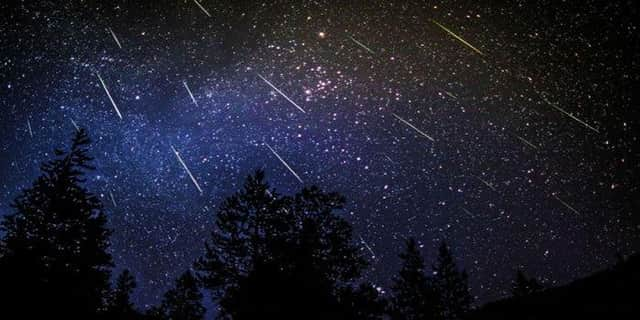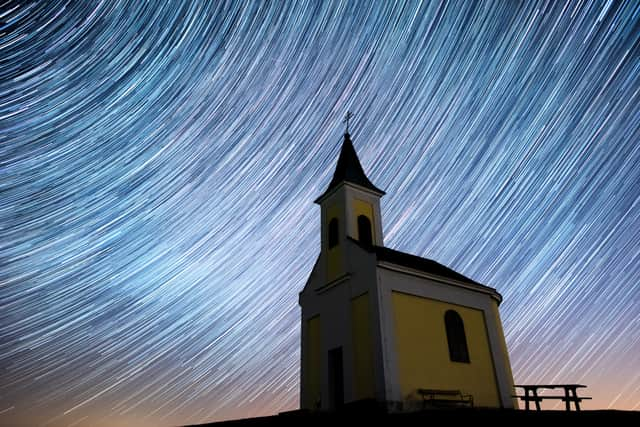Lyrids Meteor Shower 2022 Newcastle: when is it, what time can I see shooting stars - and weather forecast


For the first time since January 2022, Stargazers will be able to catch a glimpse of a meteor shower passing through the Earth’s orbit.
Following a shooting star drought of around 15 weeks, the Lyrid Shower is expected to arrive this week.
Advertisement
Hide AdAdvertisement
Hide AdThe Lyrid Shower is often seen as a fan favourite among amateurs and expert stargazers alike.
The shower was first documented as being noticed in 687BC in Chinese manuscripts and chronicles.
So when can people in Newcastle catch the Meteor shower?
Here’s everything you need to know about Lyrids Meteor Shower.
When is the Lyrids Meteor Shower?
The shower actually began on 14 April, and will end on 30 April 2022. However, you won’t be able to see the shower every night.
When are the peak times for the shower?
Advertisement
Hide AdAdvertisement
Hide AdAccuweather reports that the shower will reach its peak tonight (21 April). At its peak the shower is forecast to produce an impressive 15-20 meteors an hour.
If you miss out tonight, you may not be out of luck completely.
The other peak days for the Lyrids Meteor Shower are 22 and 23 April, so you still may be able to catch a glimpse of the shower.
In 1922, Lyrids Meteor was reported to have produced up to 100 meteors per hour.
What is a Meteor Shower?


Advertisement
Hide AdAdvertisement
Hide AdAccording to the Royal Observatory, it is when the Earth encounters many meteors at once. They are clouds of debris that come from specific sources.
Meteor shows are made up of debris that comes from an original source, known as a progenitor Comet.
An example of this is Halley’s Comet. This orbits the Sun every 76 years, and is the progenitor of the Orionids shower.
As Halley’s Comet gets closer to the Sun it heats up and starts to evaporate due to its icey state. Rather than becoming liquid the pieces turn into particles and create a cloud of debris.
Advertisement
Hide AdAdvertisement
Hide AdThe comet will go around the Sun filling its orbit with the debris. Sometimes the orbit will coincide with the Earth’s and will go through the debris.
The debris will burn up in the Earth’s atmosphere thus creating a Meteor shower or shooting stars.
What is the weather forecast for Newcastle?
Whether or not you can catch a glimpse of the ‘celestial fireworks’ depends a lot on the weather forecast.
Here’s a breakdown of the latest weather updates from the Met Office.
Thursday evening
Advertisement
Hide AdAdvertisement
Hide AdFollowing a sunny day, the evening is set to unfortunately be mostly cloudy.
With 75% cloud cover, visibility will not be at its best.
Temperatures are expected to drop to 6°C, so if you go out to to stargaze it’s best to wrap up warm.
Friday
Friday is set to be much of the same with a partial sunshine forecast. Temperatures will be expected to hit highs of 13°C.
Cloud cover is set to increase to 45% so those hoping to catch a glimpse of the shower may want to get out as early as possible.
Advertisement
Hide AdAdvertisement
Hide AdAs we move into the evening temperatures are set to drop to 6°C. Cloud cover is due to increase further with 70% coverage.
When is the next Meteor Shower?
According to Accuweather, the Eta Aquarid meteor shower is the next one that people across the UK will be able to see. The shower will peak on the night of 4 May into 5 May.
This will also feature around 15 to 20 meteors per hour for people in the Northern Hemisphere.
Comment Guidelines
National World encourages reader discussion on our stories. User feedback, insights and back-and-forth exchanges add a rich layer of context to reporting. Please review our Community Guidelines before commenting.
